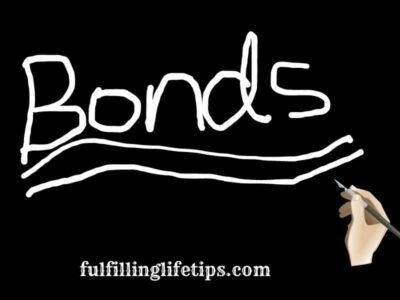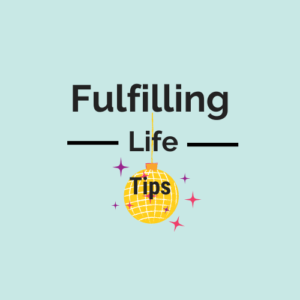Investing in bonds can be a great way to diversify your portfolio and protect yourself against volatile stock markets.

Here is a beginner’s guide to buying bonds.
Bonds provide a steady income stream and can also offer protection when other investments take a downturn. This article will provide a beginner’s guide to buying bonds, including what to look for, how to evaluate different types of bonds, and how to decide which ones are right for you.
When you buy bonds, you are essentially lending money to an entity (the issuer) for a fixed period of time. In exchange for your loan, the issuer promises to pay back the principal (the face value of the bond) plus a fixed rate of interest over the life of the bond.
As a bond investor, you’ll not only receive the principal and interest payments, but you may be able to sell the bond before its maturity date for a gain (or loss) depending on the market.
To get started investing in bonds, you’ll need to decide which type of bond to buy.
What types of bonds are there to choose from?
There are four main types of bonds that you can choose from; government bonds, corporate bonds, municipal bonds, and inflation-based bonds.
- Government aka treasury bonds are generally considered to be the safest investment since they’re typically backed by the full faith and credit of the issuing country. The US is famous for having the most reliable government bonds. For US bonds check out their website here.
- Corporate bonds are ones issued by companies and other organizations and typically have higher yields than government bonds due to the additional risk of default.
- Municipal bonds are issued by state and local governments and offer tax-free income for certain types of bonds.
- Finally, inflation-indexed bonds are designed to protect against rising inflation rates.
Once you’ve decided which type of bond is right for you, the next step is to assess the risk associated with each bond.
How do I assess the risk associated with the bond?
- Assessing the risk is done by looking at the credit ratings assigned to the bond, as well as any other factors that may influence its performance in the market, such as the issuer’s financial health and the macroeconomic environment.
- You’ll also want to consider the maturity date of the bond and any associated costs, such as broker commissions and fees.
- Finally, when you’re ready to buy bonds, it’s important to understand the different types of orders that you can place.

What are the different types of orders I can place?
- Market orders are generally the most common and involve buying or selling bonds at the going market price.
- Limit orders allow you to set the maximum or minimum price that you’re willing to pay for the bond.
- Stop orders can be used to protect against losses.
- Mutual funds and ETFs provide an easy way to invest in a variety of different bonds with a single transaction.
8 detailed strategies for investing in bonds
1. Diversify your portfolio with different types of bonds, including government, corporate, municipal, and inflation-indexed bonds.
2. Research the credit ratings of each bond before you invest. Lower credit ratings indicate higher risk, and should be avoided if possible.
3. Understand the issuer’s financial health and other market factors that could affect the bond’s performance.
4. Consider the maturity date of the bond and any associated costs.
5. Use stop orders to protect yourself against losses, and use mutual funds or ETFs to simplify your investments.
6. Buy-and-hold; This involves buying a bond and holding onto it for the long term, regardless of changes in the market. This strategy works by allowing investors to take advantage of compounding returns, as well as benefit from any price appreciation over time.
When staking out this approach, investors are typically more focused on the fundamental characteristics of the asset, rather than reacting to short-term performance or news. Buy-and-hold investors also focus on managing their overall portfolio risk and diversifying their investments across different types of assets.
7. Dollar cost averaging.
With dollar cost averaging, you slowly invest a fixed amount of money into bonds over time regardless of market performance.
By doing this, investors are taking advantage of gradual market entry points and spreading out their investment risk. This strategy allows investors to take advantage of any dips in the market while taking advantage of any potential appreciation over time.
Dollar-cost averaging can also be beneficial for those who want to increase their bond holdings but don’t have one lump sum to invest.

8. Laddering; This involves buying bonds with different maturity dates. This can help investors spread their risk and provide more consistent returns.
By laddering investments, investors are mitigating the risk associated with the bonds’ maturity date and minimizing the effect of changes in interest rates. Laddering strategies can also be used to control cash flow for different investment needs, such as when saving for a goal or when making regular payments.
When is the best time to buy a bond?
The best time to buy a bond depends on a variety of factors, including current market conditions, the bond’s credit rating, and the issuer’s financial health.
Generally speaking, it’s best to buy bonds when you feel that the bond is undervalued and the issuer is in a strong financial position. It’s also important to watch for any changes in interest rates or the macroeconomic environment, as these can affect both the future value of the bond and the rate of return.
Conclusion to guide to buying bonds.
Investing in bonds can be a great way to diversify your portfolio and provide a steady stream of income. Before investing, it’s important to understand the different types of bonds and assess the risks associated with each one. With some research and smart decisions, investors can make use of various strategies, such as buy-and-hold, dollar cost averaging, and laddering, to maximize their returns and minimize their risk.



